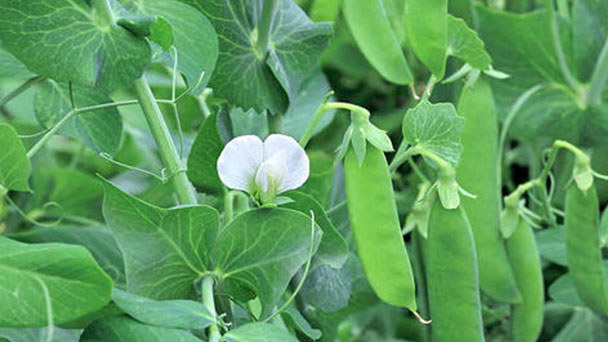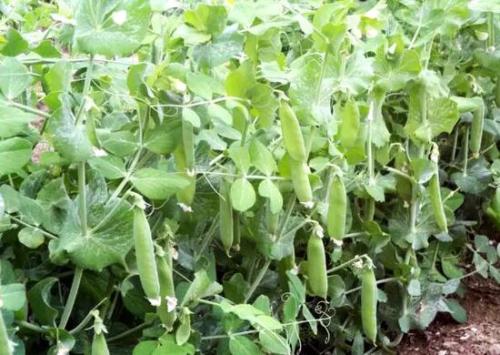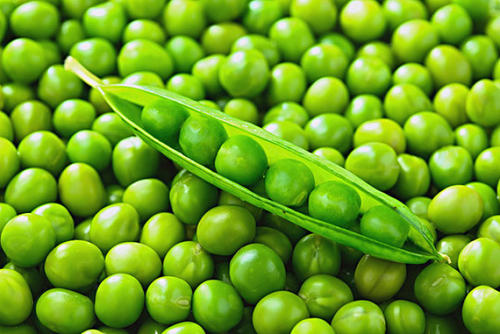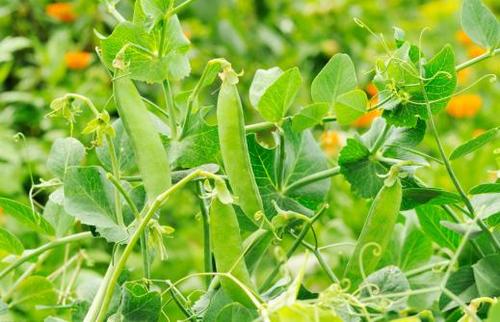Green Pea profile
Written by Maggie
Jan 28 2021

Green Pea, scientific name Pisum sativum, is a leguminous plant, originated from western Asia, Mediterranean region, Ethiopia and western Asia Minor, and has a wide geographical distribution in the world due to its strong adaptability.
Green Pea picture

Morphological characteristics of green pea
Green Pea is an annual climbing herb, 0.5-2 m tall.Whole plant green, smooth glabrous, covered with powdered cream.
Leaves of Green Pea are 4-6 leaflets, stipules larger than leaflets, leaf-shaped, cordate, lower margin finely dentate. Leaflets are ovoid, 2-5 cm long, 1-2.5 cm wide; Flowers in leaf axils are solitary or several arranged racemes; Calyx of Green Pea is campanulate, deeply 5-lobed, lobes lanceolate; The corolla is variously colored, depending on the species, but is mostly white and purple, and the stamens are (9+1) two-bodied.
Ovary of Green Pea is glabrous, style flat, inner surface bearded. Pod is swelling, long elliptic, 2.5-10 cm long, 0.7-14 cm wide, the top oblique acute, back nearly straight, the inner side of the hard paper endothelium; Seeds are 2-10, rounded, bluish green, wrinkled or absent, yellow when dried.
Green pea growing environment
Green Pea is a semi-cold tolerant crop, like mild and humid climate, can not tolerate hot and dry. Green Pea is a long-sunshine crop, which likes temperature and has poor drought resistance.Green Pea has a wide adaptability to soil, but it does not require high soil quality. It is most suitable for sandy loam and loam with strong hydraulic capacity, good aeration and rich humus.The pH value is 6.0-7.2.
Green pea distribution range
In China Green Pea is mainly distributed in the central, northeast and other regions. The main production areas are Sichuan, Henan, Hubei, Jiangsu, Qinghai, Jiangxi and other provinces and regions. Green Pea originated in China and Central Asia, and mainly distributed in Asia and Europe.
Green pea growing methods
Directional seed selection. Seed selection has two points: 1. Plant selection. When the Green Pea plants grow up, blossom and pod, the plants without diseases and pests, with high yield and typical characteristics of the original variety will be selected as the "mother" to cultivate high-quality seeds. During seed selection, the Green Pea and pods with robust growth and pure seed properties should be selected as the remaining plants according to their flower color, pod shape and pod position.2. Choose. The selection of the plant in the middle of the pod as "pod" (different varieties of Green Pea distance is 100-120 meters, in order to avoid variety kinds of mixed), the specific method is: after waiting for the Green Pea plants flowering podding, in the pure plant growth robust, traits, choose knot, the middle of the vines shape correct pod for kinds of pod, will other irregular shape or at the top of the vines of pod edible harvested at an early date, a pod on plant until maturity.
2. Key points of fertilization in Green Pea fields. Green Pea has a strong ability to absorb phosphate fertilizer. When applying basic fertilizer, 40 kg of cake fertilizer, 20 kg of superphosphate and 10 kg of potassium chloride can be applied to each acre of Green Pea field. During the overwintering period, 8-10 kg of topdressing urea, 15 kg of superphosphate and 15 kg of potassium chloride were applied per acre. When Green Pea blossoms and pods, 35 to 40 kg of nitrogen, phosphorus and potassium compound fertilizer should be applied to each acre (the fertilizer should be 8 to 10 cm away from the seeds or plants so as not to burn the seeds or plant roots), so as to meet the requirements of fertilizer for the whole growing period of Green Pea.
Three, anti-pour cold, timely harvesting. When the vines of Green Pea are 20 to 30 cm high, a post should be set up in the field to prevent the Green Pea plants from falling down. Green Pea plants grow slowly in autumn and winter, and should be covered with straw (or with manure bacon) in winter to keep warm and prevent freezing. In spring, when the climate turns warm, the straw (or barnyard manure) is ploughed and hoed into the fertile soil.When the seed pods of the selected Green Pea become hard and yellow in color, the whole plant shall be pulled up, and the seed pods shall be dried in the sun. After threshing and clearing, the seed pods shall be stored in a cool and ventilated place.

Green pea propagation methods
Seed selection and accelerating bud: select seeds of Green Pea with 40% salt water before sowing to remove the seeds that are not full or infested. Before sowing, the seeds should be accelerated to bud. When the seeds of Green Pea show buds, the seeds should be treated at a low temperature of 0-2℃ for 15 days before sowing.
Rhizobium seed dressing: Rhizobium seed dressing is an effective measure to increase yield for Green Pea. After seed dressing with Rhizobium bacteria, the nodule increased, the stem and leaf grew exuberant, the pods were more and the yield was high. The seed dressing method is to use 10-19 grams of rhizobia per acre, add a little water and mix well with the seeds before sowing.
Sowing Green Pea at the right time: before sowing in the field, apply the barnyard manure, compost and a certain amount of phosphorus and potash fertilizer, especially the phosphate fertilizer, and the effect of increasing yield is obvious. Green Pea uses on-demand sowing, row spacing is 10-20 cm, row spacing is 5 cm, 2-6 seeds are sown in each hole, and 5-6 cm soil is covered when the soil is wet. The soil is slightly thicker when it is dry. Use 10-15 kilograms per acre.
Green Pea main value
Green Pea is sweet in taste and smooth in nature. Green Pea is beneficial to the spleen and stomach meridian, stops diarrhea, regulates the health of the body, improves urine, eliminates swelling of carbuncle, and relieves milk stone poison. Green Pea has a certain therapeutic effect on beriberi, carbuncle swelling, milk obstruction, spleen and stomach discomfort, hiccup and vomiting, abdominal pain, thirst, dysentery and other diseases.

Latest Updated
- Benefits of Bugleweed - 7 Science-backed Health Benefits
- Bugleweed Dangers & Side Effects - Is It Poisonous?
- How to Plant Evergreen Trees - What You Should Know
- When to Plant Evergreens - Grow Guide for Evergreen Trees
- 12 Wonderful Evergreen Shrubs for Your Garden
- 12 Popular Evergreen Plants with Pictures for Beginners
- When And How To Prune A Lilac Bush Like a Pro
- How to Grow & Care for Lilac Vine (Hardenbergia Violacea)
- Japanese Lilac Tree (Syringa Reticulata) Care & Propagation Guide
- Shumard Oak Pros and Cons - What to Know
Popular Articles
- Winter maintenance of Antirrhinum Majus
- How to Grow Terminalia Mantaly Tree
- How to Grow and Care for Crossostephium Chinense
- How to grow Antirrhinum Majus in spring
- Peristeria Elata (Dove Orchid) Profile: Info & Care Guide
- Underwatered Snake Plant (Sansevieria Trifasciata) - Signs And How To Fix
- How to Care for Brazilian Jasmine Plant (Mandevilla Sanderi)
- How to Grow & Care for Graptopetalum Purple Delight in Summer
- Rosa Chinensis (China Rose): Plant Growing & Care Tips
- How to Care for Baby Sun Rose (Aptenia Cordifolia)